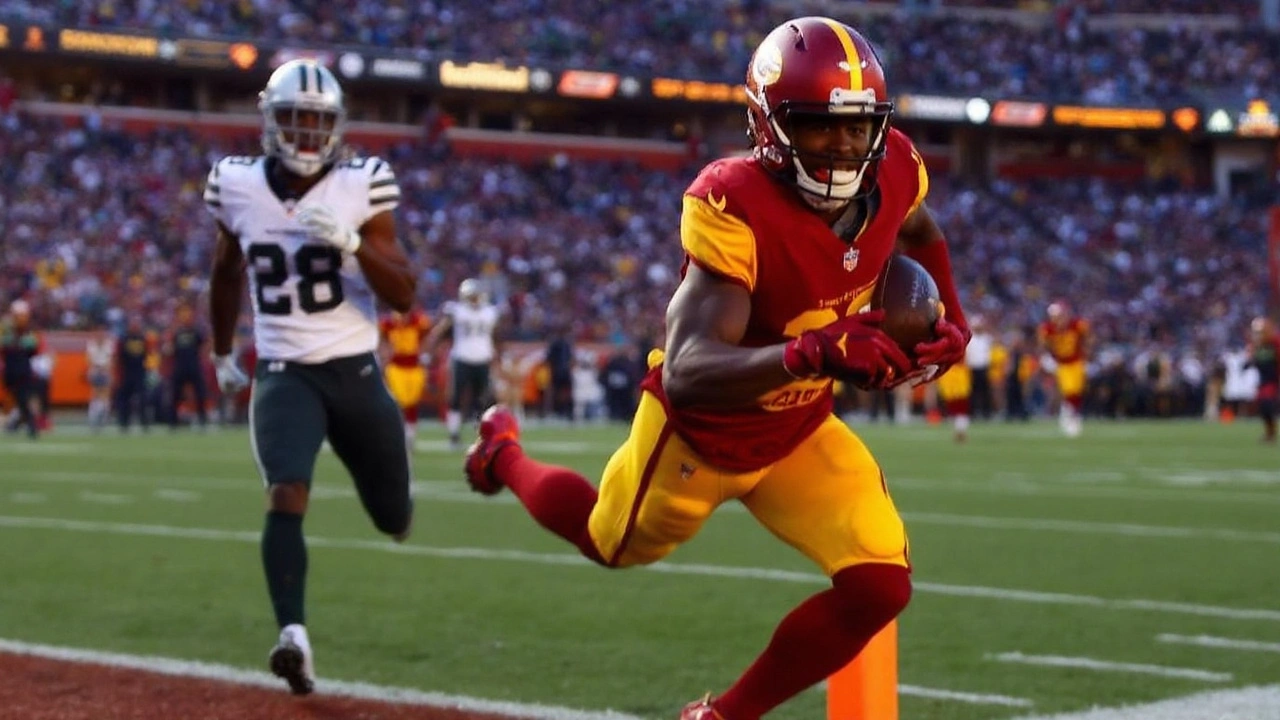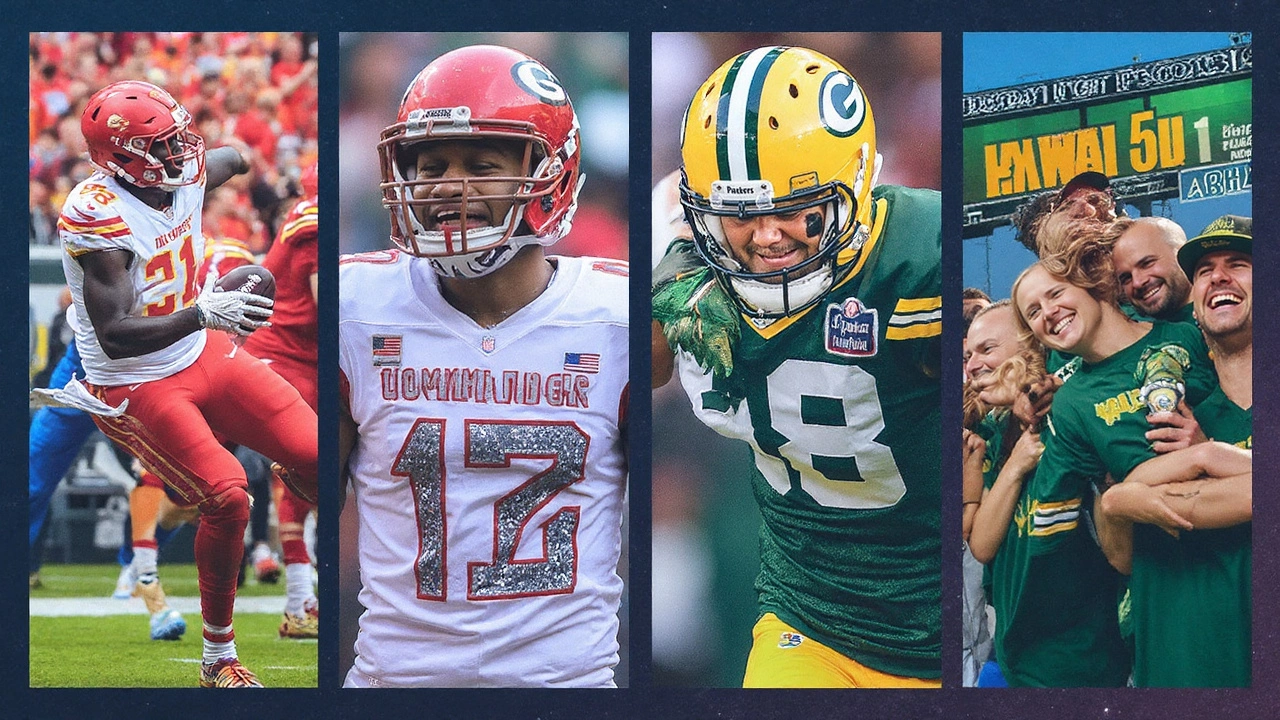How to watch and stream Thursday Night Football
Lambeau Field under the lights, two 1-0 teams, and a national stage. That’s the setup for Packers vs Commanders on Thursday Night Football, kicking off at 8:20 p.m. ET on September 11, 2025.
Amazon Prime Video has the exclusive national broadcast for TNF. If you’re a Prime member or have a standalone Prime Video subscription, you can stream on most smart TVs, streaming sticks (Fire TV, Roku, Apple TV), game consoles, mobile devices, or a web browser. Amazon typically offers multiple feeds, including the main broadcast and alternate presentations like data-rich views and Spanish-language audio.
In the Green Bay market, the game will also air over-the-air on WGBA-TV, giving local fans a traditional TV option. Home-market simulcasts are standard for Thursday Night Football, so Commanders fans in the Washington area should also have an over-the-air option; check local listings there for the assigned station.
On the call: Al Michaels handles play-by-play with Kirk Herbstreit as analyst. Expect the familiar TNF production—in-game analytics, quick replays, and field-level angles that highlight tempo and matchups.
If you can’t stream, live updates, stats, and play-by-play are available in major sports apps, including the CBS Sports App. You’ll also find live watch-alongs on YouTube that offer commentary and fan reactions, though they won’t show game footage.
- Date: Thursday, Sept. 11, 2025
- Kickoff: 8:20 p.m. ET
- Venue: Lambeau Field, Green Bay
- National stream: Amazon Prime Video
- Green Bay local TV: WGBA-TV
- Announcers: Al Michaels (play-by-play), Kirk Herbstreit (analyst)
- Line: Packers -3.5
- Over/Under: 48.5

What to expect on the field
Both teams hit Week 2 unbeaten. Green Bay handled Detroit in its opener, leaning on a fast, disruptive defense and a clean night from quarterback Jordan Love. Washington topped the Giants behind a poised start from second-year quarterback Jayden Daniels, whose mobility stretches defenses and opens windows for Terry McLaurin on intermediate routes.
For the Commanders, Daniels’ legs are more than a scramble plan—they tilt coverages. Green Bay’s edge rush has to rush as a unit, not just win one-on-ones. That means keeping outside leverage, closing escape lanes, and forcing Daniels to finish drives from the pocket. If the Packers can turn Washington’s offense into a series of third-and-longs, their disguised pressures and late-rotating safeties become a problem.
McLaurin is the chain-mover and shot-play threat Washington needs to quiet a Lambeau crowd. Expect motion and stacked releases to free him from press coverage. If Green Bay shadows him with safety help, Washington will need a second receiver or tight end to punish single coverage and keep drives alive. Watch early for quick-game throws—hitches, outs, and RPO slants—to settle Daniels and control the pass rush.
On the other side, Love’s growth has shown in his timing and red-zone patience. Green Bay likes to stress defenses horizontally before taking calculated deep shots. If the Packers can keep their run game efficient—four-yard chunks on first down—LaFleur’s play-action menu opens up: crossers behind linebackers, leak routes to backs, and the occasional double-move outside. Washington’s tackling at the second level will be tested.
Third downs could decide this one. Green Bay wants third-and-manageable, where Love’s quick release and option routes win. Washington wants to turn those downs into pressure opportunities, muddying the picture pre-snap and getting Love to hold the ball just a beat longer. If Washington consistently wins first down on defense, the game tightens and the upset path widens.
Special teams matter in primetime at Lambeau. Field position swings quickly with night-time winds off the bay, and both coaches know the value of pinning inside the 10. A hidden yardage edge—10 to 15 yards per drive—can be the difference between field goals and punts.
As for the numbers, oddsmakers have Green Bay favored by 3.5 with a total of 48.5. That spread nods to the home-field edge and the Packers’ defense. The total suggests a game with stretches of tempo and a few explosive plays, but not a shootout. If either team finishes plus-two in turnover margin, that likely decides it.
One housekeeping note for those following pregame chatter: you might see Micah Parsons’ name pop up in stray search results. He plays for the Cowboys, not either team here. File that under internet noise.
What will swing momentum? Three pressure points stand out:
- Containment of Jayden Daniels: Green Bay needs rush-lane discipline. One missed edge and a three-yard gain turns into 18.
- Explosive plays: Washington must hit at least two shot plays to keep pace. Green Bay’s deep shots often come off play-action and bunch formations—watch for layered routes.
- Red-zone efficiency: Field goals won’t beat the Packers at home. Washington needs sevens, not threes. Green Bay’s tight bunches and rub routes are built for the 10-yard line.
If you’re setting up your viewing plan, budget a few minutes before kickoff to confirm your Prime login and audio preferences; Amazon’s alternate feeds can be worth sampling. And remember, inactive lists post roughly 90 minutes before kickoff—any late scratches along the offensive line or at receiver could change how both teams call this game.
Two teams trying to start 2-0, a raucous crowd, and a broadcast built for the national stage. If Green Bay’s pass rush lands early, the Packers can lean into their script and ride the noise. If Washington steals an early possession and lands a big play to McLaurin, we’ve got a fourth-quarter coin flip at Lambeau.
